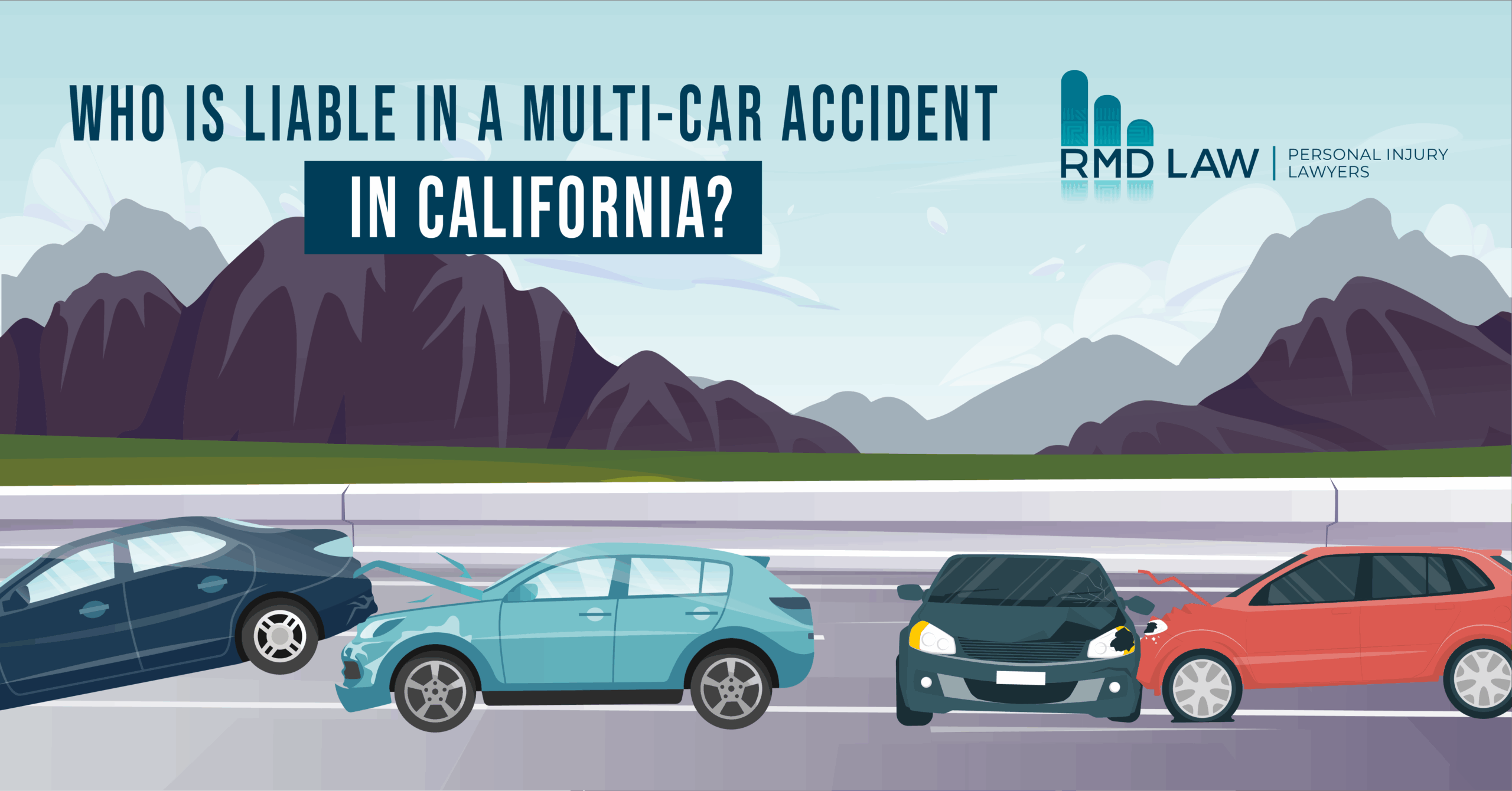Key Takeaways:
Determining Liability in Multi-Car Accidents Is Complicated
- California’s comparative negligence law allows injured parties to recover damages even if they are partially at fault.
- However, proving who’s responsible may require accident reconstruction experts, detailed evidence, and skilled legal guidance to untangle the sequence of events.
California Roads and Regional Conditions Increase the Risk of Multi-Car Crashes
- From dense urban traffic in Los Angeles and San Francisco to fog-prone highways in the Central Valley, California’s unique geography and roadways contribute to a higher risk of chain-reaction accidents.
- Drivers across the state face regional hazards that make multi-car collisions more likely and more complicated to resolve.
A Personal Injury Lawyer Is Crucial After a Multi-Vehicle Collision
- Because these accidents involve multiple parties and insurance companies, legal representation is essential.
- A California car accident attorney can investigate the crash, identify all liable parties, negotiate with insurers, and maximize compensation for medical bills, lost wages, and other damages.
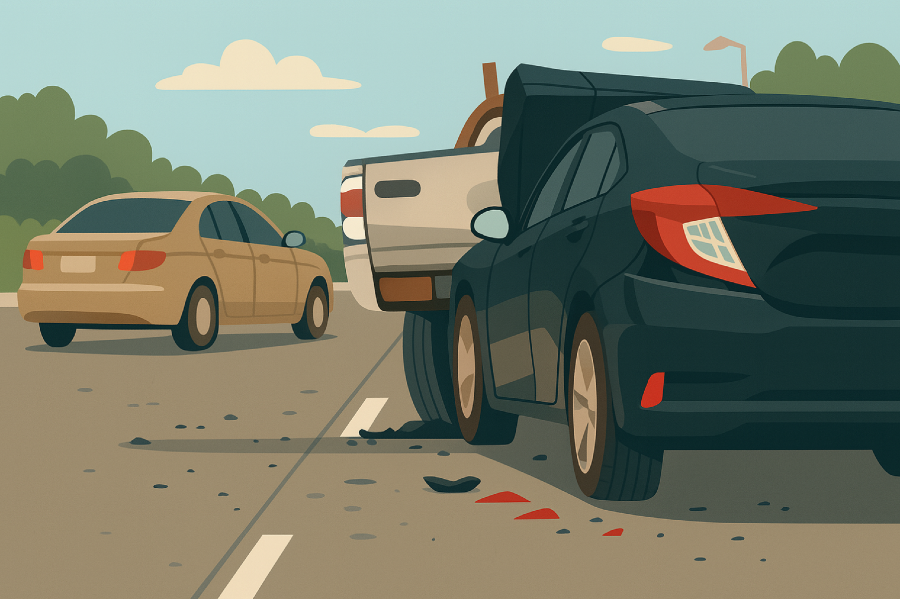
Multi-Car Accidents in California
Multi-car accidents, often called pile-ups or chain-reaction crashes, are unfortunately a reality on California’s busy roads. These multi-car accidents are a type of serious car accident, often resulting in significant injuries and complex legal situations for those involved. Whether it’s a foggy freeway near Sacramento or rush-hour traffic in Los Angeles, these crashes involve three or more vehicles in a single incident. With so many drivers and passengers involved, a common question arises: Who is liable in a multi-car accident?
Determining fault in these complex collisions can be challenging, but understanding the basics can help. In this blog, we’ll break down what counts as a multi-car accident, common causes of these crashes, who can be held liable under California law, why proving fault is complicated, and how a California car accident lawyer can help you navigate the aftermath.
What Is a Multi-Car Accident?
A multi-car accident is any crash involving three or more vehicles. It usually begins with a primary collision between two cars, and then additional vehicles get caught up in the chain reaction. In other words, one car might hit another, and that impact causes subsequent cars to collide in a pile-up. These accidents often occur on high-speed roads like freeways where vehicles are following closely and have little time to react. They are also more likely in hazardous conditions, such as heavy fog, rain, or other bad weather can precipitate a chain-reaction crash because drivers may not see the danger ahead until it’s too late.
Multi-car crashes are typically more chaotic than two-car accidents. There may be multiple points of impact and a lot of confusion at the scene. They can range from a three-car fender bender at a busy intersection to massive freeway pile-ups involving dozens of vehicles. California has seen some extreme examples, such as major fog-related pile-ups in the Central Valley and traffic collisions on crowded Los Angeles freeways.
Car accident statistics show that while giant 50-car pile-ups are rare, multi-vehicle accidents happen often enough to be a serious concern. In fact, about 44% of California’s fatal crashes involve multiple vehicles (two or more) rather than just a single vehicle. According to car accident statistics from a recent five-year period, more than 1,500 fatal crashes in California involved three or more vehicles – roughly 8.4% of all the state’s fatal accidents. This shows that multi-car accidents, while not the majority of crashes, are far from uncommon on California roads.
Types of Multi-Car Accidents
Multi-car accidents are some of the most complex and challenging incidents on California roads. Understanding the different types of multi-car accidents can help you recognize how these collisions occur and why determining fault is rarely straightforward.
Chain Reaction Accidents: One of the most common forms of multi-car accidents is the chain reaction crash. This typically starts when one vehicle collides with another, setting off a domino effect as subsequent vehicles are unable to stop in time and crash into the vehicles ahead. Chain reaction accidents are especially common in heavy traffic or during sudden stops, and distracted driving often plays a major role in triggering these pileups.
Intersection Accidents: Intersections are hotspots for multi-car collisions, especially when drivers fail to yield, run red lights, or misjudge the flow of traffic. When several vehicles enter an intersection at the same time, the result can be a tangled mess of cars, with multiple parties potentially at fault. These accidents can be particularly complicated, as the sequence of events may be unclear and several drivers may share responsibility.
Highway Accidents: High-speed highways and freeways are frequent sites of multi-car accidents, especially in California’s densely populated regions. Speeding, aggressive driving, and distracted driving are common factors that contribute to these large-scale crashes. When vehicles are traveling at high speeds, a single mistake can quickly escalate into a major pileup involving numerous cars and serious injuries.
Parking Lot Accidents: While parking lots may seem less dangerous, multi-car accidents can and do happen in these confined spaces. Reckless driving, failure to yield, and limited visibility can all lead to collisions involving several vehicles. Although these accidents often occur at lower speeds, they can still result in significant property damage and complicated questions of liability.
No matter the type of multi-car accident, the aftermath can be overwhelming. Multiple parties, conflicting accounts, and complex insurance issues make it essential to have an experienced car accident lawyer on your side. A skilled accident lawyer can help you navigate the legal process, gather crucial evidence, and fight for the fair compensation you deserve after a multi-vehicle crash.
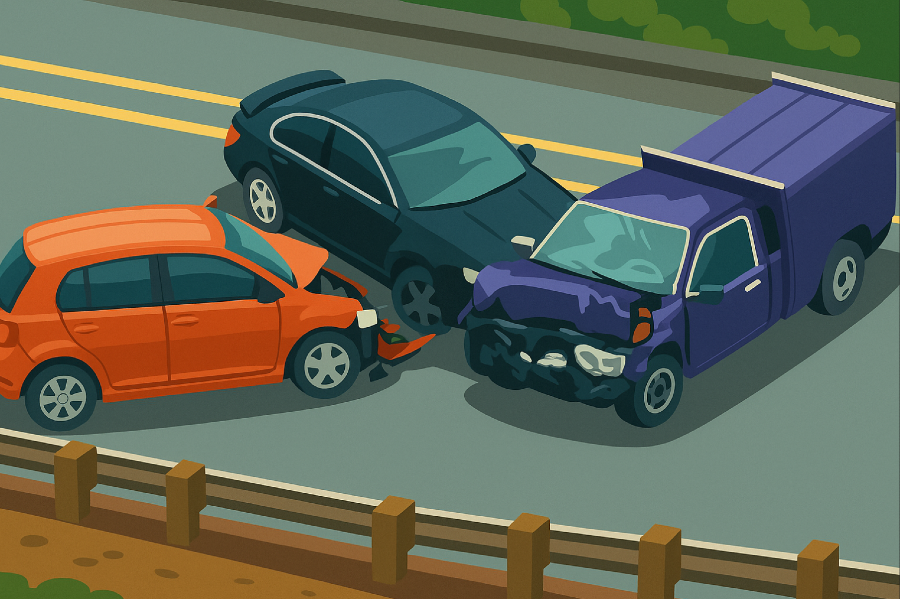
Common Causes of Multi-Car Accidents
Multi-vehicle accidents usually don’t “just happen” out of nowhere – they’re triggered by specific conditions or driver behaviors that set off a chain reaction. Understanding the different types of car accidents can help drivers recognize risk factors and prevent multi-car collisions. Here are some of the most common causes of multi-car collisions in California:
Heavy Traffic and Tailgating
California’s busy freeways, especially in metropolitan areas like Los Angeles and San Francisco, are often jammed with vehicles. In fact, these cities lose almost 95–97 hours a year sitting in traffic, among the worst in the nation. In these stop-and-go conditions, one sudden stop can trigger a chain reaction crash if drivers are following too closely. Tailgating is a major culprit behind multi-car accidents, contributing to nearly 4,000 injury crashes in California in a single year. Keeping a safe distance in heavy traffic (for example, on the I-405 or I-5 during rush hour) is crucial to prevent these domino-effect collisions.
Speeding and Aggressive Driving
Excess speed and aggressive maneuvers are leading causes of crashes on California roads. “Unsafe speed” consistently tops the list of primary collision factors in state crash data, meaning nearly half of all accidents involve someone driving too fast. When a driver is speeding or weaving through lanes, they have less time to react and can easily set off a multi-car pileup. Unsafe lane changes and other aggressive driving behaviors also contribute to many crashes each year. Simply put, driving at a safe speed and avoiding reckless moves can dramatically lower the risk of causing a chain-reaction accident.
Distracted Driving
Distracted driving, often due to texting or smartphone use, is another common factor in multi-vehicle collisions. Taking your eyes or mind off the road for even a moment in California’s fast-paced traffic can lead to a deadly pileup. Distracted driving can also result in traumatic brain injuries, which are among the most severe consequences of multi-car accidents.
In 2021, there were 140 fatalities from crashes involving distracted drivers in California, a sharp increase from the prior year. Whether on the congested streets of Los Angeles or the highways of Orange County, drivers fiddling with phones or other distractions may not notice traffic slowing ahead, causing them to slam into one car and set off a chain of crashes. Staying alert and focused can literally save lives on California roads.
Impaired Driving (DUI)
Driving under the influence of alcohol or drugs remains a serious problem on California’s highways. An impaired driver’s slowed reaction time and poor decision-making can easily result in a multi-car accident.
For example, swerving across lanes or failing to brake can collect numerous vehicles in a single wreck. DUI is a factor in a significant share of crashes (over 6,000 accidents in 2021 were attributed to drunk or drugged driving). Tragically, nearly 1,500 people died in 2022 in California crashes involving alcohol-impaired drivers. Avoiding driving while intoxicated (and keeping an eye out for erratic drivers) is key to preventing these often catastrophic multi-vehicle accidents.
Weather and Road Conditions
California’s diverse geography means drivers sometimes face sudden weather hazards that can cause multi-car crashes. In the Central Valley, for instance, dense Tule fog can drop visibility to near zero – a foggy day in 2007 caused a 108-vehicle pileup on Highway 99 south of Fresno. In the more arid parts of the state, high winds can kick up dust storms that similarly blind drivers; one infamous Interstate 5 dust storm near Coalinga led to a 104-car chain collision with 17 fatalities.
Even rain can be perilous: after long dry spells, the first rain makes roads extremely slick from oil buildup, often leading to multiple crashes when drivers don’t slow down. In mountainous areas, sudden snow or ice can have the same effect. California drivers learn to be cautious in these conditions – slowing down, using headlights in low visibility, and increasing following distance – to avoid massive multi-car accidents caused by weather and road factors.
Many of these factors can combine. It’s not hard to imagine a worst-case scenario: on a rainy night in Los Angeles, a speeding driver is also texting and doesn’t see traffic stopped ahead – they crash, and multiple cars pile up behind them. The bottom line is multi-car accidents tend to occur on highways or high-speed roads, and usually result from one or more drivers not being able to react in time to an unexpected hazard.
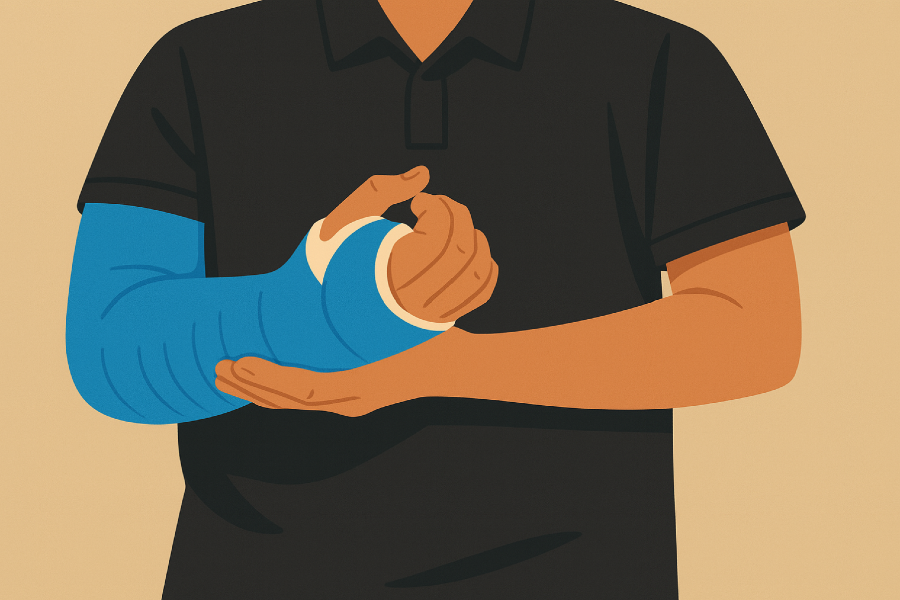
Common Car Accident Injuries
Car accidents can cause a wide spectrum of injuries, ranging from minor aches to life-changing trauma. The force of a collision, especially in multi-car accidents, can lead to both visible and hidden injuries that may require extensive medical treatment and long-term care. Understanding the most common car accident injuries, as well as the potential for catastrophic harm, is crucial for anyone involved in a crash.
Common Car Accident Injuries
Many car accident victims experience injuries that may seem minor at first but can have lasting effects. Some of the most frequent injuries include:
Whiplash and Neck Injuries: Sudden jolts during a crash can cause the neck to snap back and forth rapidly, resulting in strained muscles, ligaments, and discs. Whiplash symptoms can include pain, stiffness, and headaches, sometimes lasting weeks or months.
Back Injuries: The impact can cause herniated discs, spinal fractures, or muscle strains, leading to chronic pain or limited mobility.
Broken Bones: Arms, legs, ribs, and facial bones are commonly fractured in collisions, often requiring surgery and rehabilitation.
Cuts and Lacerations: Broken glass, metal, or debris can cause deep cuts that may require stitches or reconstructive surgery.
Bruises and Contusions: Impact with the steering wheel, dashboard, or airbags can cause significant bruising and soft tissue damage.
Concussions and Traumatic Brain Injuries (TBI): Even a mild concussion can cause dizziness, memory loss, and cognitive difficulties. Severe TBIs can result in permanent disability or death.
Catastrophic Injuries
Some car accidents cause catastrophic injuries that dramatically alter a victim’s life. These injuries often require lifelong medical care and can lead to permanent disability. Examples include:
Spinal Cord Injuries: Damage to the spinal cord can cause partial or complete paralysis, affecting mobility and independence.
Severe Traumatic Brain Injuries: These can impair cognitive function, speech, and motor skills, requiring extensive rehabilitation.
Amputations: In high-impact crashes, limbs may be severely damaged or lost.
Internal Injuries: Damage to organs such as the lungs, liver, or spleen can be life-threatening and may not be immediately apparent.
Burns: Fires or exposure to hazardous materials during a crash can cause severe burns requiring specialized treatment.
Hidden and Internal Injuries
Not all injuries from a car accident are immediately visible. Internal injuries, such as bleeding, organ damage, or internal fractures, can be life-threatening if not promptly diagnosed and treated. Symptoms might include abdominal pain, dizziness, or shortness of breath. Medical evaluation after any accident is essential to detect these hidden dangers.
Psychological Injuries
The trauma of a car accident can also lead to psychological injuries, including:
Post-Traumatic Stress Disorder (PTSD): Flashbacks, anxiety, and emotional distress following the accident.
Depression and Anxiety: Emotional responses to injuries, financial stress, or lifestyle changes.
Phobias: Fear of driving or riding in vehicles after an accident.
Importance of Medical Attention
Seeking immediate medical care after a car accident is vital, even if injuries seem minor. Early diagnosis and treatment can prevent complications and provide documentation necessary for personal injury claims. An experienced car accident injury lawyer can help ensure you receive proper medical evaluation and that your injuries are accurately documented for your case.
Long-Term Impact and Financial Consequences
Car accident injuries can lead to significant financial burdens, including medical bills, lost wages, rehabilitation costs, and ongoing care expenses. Catastrophic injuries may require home modifications, assistive devices, and long-term support. Auto accident victims often face emotional and physical challenges that affect their quality of life.
Having a knowledgeable California car accident lawyer or an experienced auto accident attorney can help you navigate the complex legal and medical landscape. They work to secure the financial compensation you deserve to cover medical expenses, lost income, pain and suffering, and other damages resulting from your accident.
Understanding the wide range of possible injuries and their consequences underscores the importance of legal representation and proper medical care after any car accident, especially multi-car collisions where the risk of serious harm is higher.
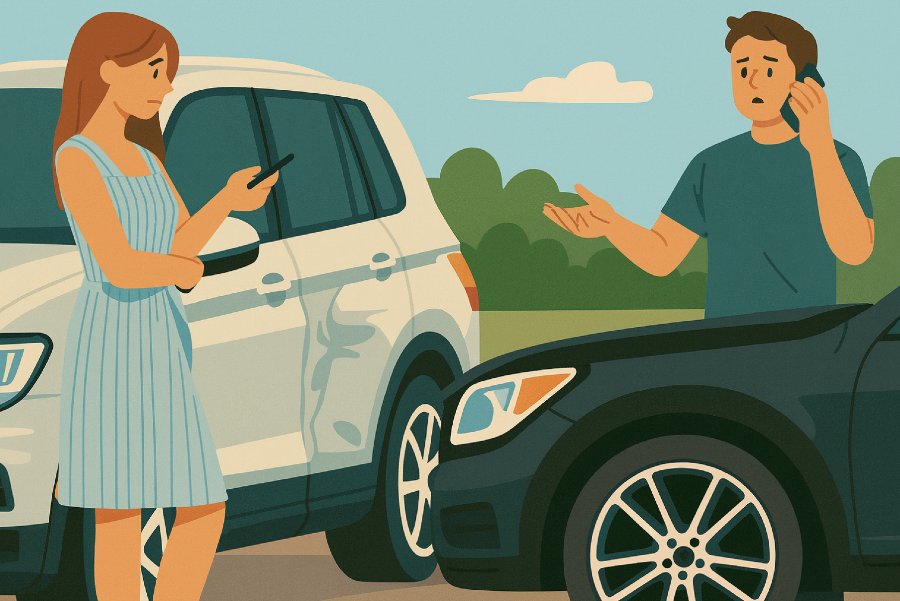
Who Can Be Held Liable in a Multi-Car Pile-Up?
Liability in a multi-car accident can be tricky to sort out. In a simple two-car crash, fault might be clear – for example, the driver who rear-ended another is usually at fault. But in a chain reaction involving three, four, or a dozen cars, multiple drivers may share blame. Each party involved in the accident – including drivers, third parties, or even entities like manufacturers or mechanics – may have a share of responsibility depending on their actions or negligence. Here are some key points about liability in these situations:
Initial Driver vs. Following Drivers
Often, the driver who caused the first impact (the primary collision) is a major at-fault party. For instance, if Car A’s negligence (speeding, distraction, etc.) causes them to crash into Car B, which then hits Car C, Car A will likely bear a large portion of the liability. However, that doesn’t automatically absolve the other drivers. If Car B was following too closely or Car C was also driving carelessly, they might be found partially liable as well. Each driver’s actions leading up to the crash will be scrutinized. Chain-reaction accidents may involve instances of carelessness by multiple drivers, not just one.
Comparative Negligence in California
California follows a pure comparative negligence rule for accidents. This means each party can be held responsible for their percentage of fault, and an injured person can still recover damages even if they are partly to blame by filing a personal injury claim under California’s comparative negligence system.
For example, imagine a multi-car wreck on the I-405 in Orange County: Driver X was texting and triggered the crash by hitting Driver Y, but Driver Z was tailgating and contributed to the pile-up by not stopping in time. In this case, Driver X might be, say, 70% at fault and Driver Z 30% at fault. If you (Driver Y) were injured, you could pursue claims against both X and Z.
If Driver Y also had some fault (perhaps you stopped suddenly due to a minor hazard), a percentage could be assigned to you as well – but you’re not barred from recovery unless you were 100% at fault. In California’s pure comparative system, even someone 99% at fault could technically recover 1% of their damages from another at-fault party. (By contrast, some other states have stricter rules, but California’s law is very plaintiff-friendly on this point.)
Joint and Several Liability for Injuries
California law also has a concept of joint and several liability for economic damages, which means if multiple defendants are found liable, each can be responsible for the full amount of economic losses (like medical expenses and medical bills) regardless of their percentage of fault, though for non-economic damages each pays their share. This is getting into legal weeds, but it basically ensures an injured victim can recover their losses even if one party can’t pay, by collecting from another at-fault party. However, determining those fault percentages in the first place is the real challenge.
Other Liable Parties
While drivers are usually the ones at fault, sometimes liability can extend to others. Identifying the at-fault driver is a key part of determining who is responsible for the accident, but it’s also important to consider other potentially liable parties. If a vehicle defect contributed (e.g. brake lights not working on one car, causing others not to realize it was stopping), a vehicle manufacturer or mechanic could be partly liable.
If poor road design or maintenance played a role (say, missing signage about a construction zone that led to sudden braking), a government entity might have some responsibility. These are less common, but a thorough investigation looks at all possible causes of the crash.
Examples of Liability Scenarios
Consider a typical chain-reaction accident scenario: Car D is at the end of a line of traffic and rear-ends Car C, pushing Car C into Car B, and Car B into Car A. If Car D simply wasn’t paying attention, Car D might be held 100% liable for everyone’s damages. But real life is often messier. Suppose Car C’s brake lights were out, so Car D didn’t realize C was stopped.
And imagine Car B was driving drunk and had already hit Car A before the impact from behind even happened. In a case like that, fault could be shared: Car B for hitting A (due to drunk driving), Car D for hitting C (maybe partially excused because of the brake light issue, but still following too close), and even Car C might bear a tiny share for the faulty brake lights causing a hazard. Each driver’s negligence is weighed. It’s not unheard of for three or four drivers all to be assigned a portion of blame in a multi-car pile-up. The key question is always: whose negligence caused or contributed to the collision?
In summary, liability can be spread across several people in a multi-car accident. California’s laws allow an accident victim or other injured parties to pursue compensation from any driver who was negligent. But figuring out who those negligent parties are – and to what extent each is responsible – is often the hardest part of multi-vehicle accident claims.
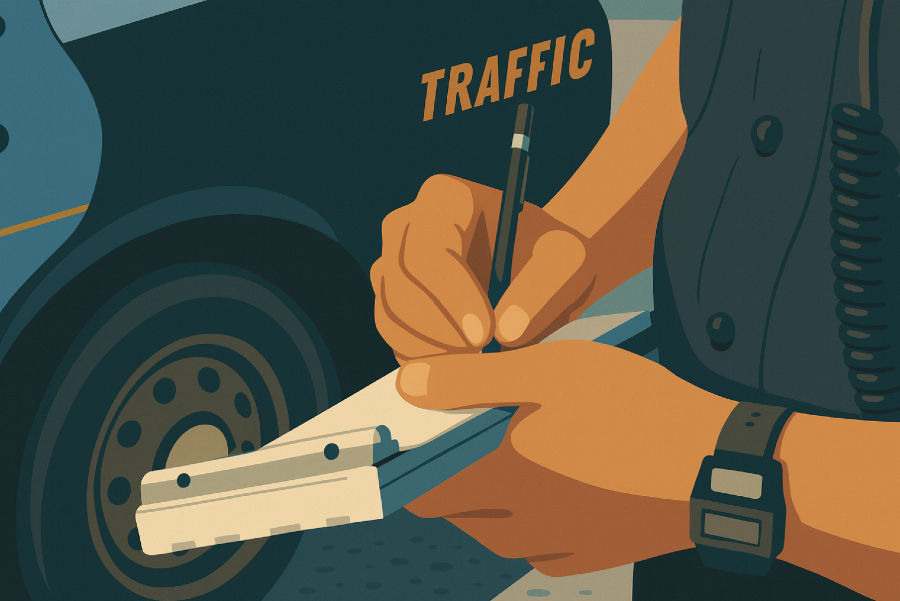
The Complications of Proving Liability in Multi-Car Crashes
Proving liability in a multi-car accident can feel like untangling a giant knot. With so many vehicles involved, the situation gets complicated due to the need to carefully analyze the accident scene to gather crucial information, such as police reports, witness statements, and photos, which are essential for proving negligence and liability.
Conflicting Accounts
Each driver and witness may have a different perspective on what happened (“Driver A stopped short,” “No, Driver B was speeding,” etc.). It’s common to have conflicting reports where everyone points fingers at someone else. Insurance companies know this and often seize on the confusion – it’s not unusual for each insurer to claim their driver isn’t at fault and that another driver caused the pile-up. As RMD Law noted on social media, insurance claims after multi-car accidents can be very complex – with multiple parties, conflicting reports, and insurers pointing fingers at each other, trying to avoid liability.
Multiple Impact Points
In a pile-up, there may be several collisions happening in quick succession. For example, the front of your car might have hit the car ahead, and then your rear got hit by another car. So you have damage (and possibly injuries) from two directions. This raises questions: did your injuries come from the first hit or the second? Did the person who hit you cause it, or were they pushed by someone behind them? It can be technically challenging to sort out the sequence of impacts and link each impact to specific damages or injuries.
Determining the Chain of Causation
Legally, one has to establish who was the proximate cause of each part of the crash. In straightforward accidents, it’s easier. In multi-car crashes, you might need accident reconstruction experts to analyze the scene. They look at things like skid marks, vehicle damage profiles, and stopping distances to figure out how the crash unfolded. For instance, experts might determine that Car D’s impact caused all the forward damage, whereas Car B’s impact was minor and only caused a small portion of the harm. These investigations take time and resources.
Need for Detailed Evidence
Because stories might conflict, evidence becomes critical. Key evidence can include traffic or surveillance camera footage, event data recorders (“black boxes”) from the cars, and physical evidence from the scene. In California, police will usually investigate major multi-vehicle crashes, but police reports might not always assign blame clearly when it’s complicated. You may need additional expert analysis. Gathering this evidence quickly is important – skid marks fade, vehicles get repaired, and memories of witnesses can change.
Legal and Insurance Complexity
Each driver involved will report the accident to their insurance. You could potentially be dealing with three, four, or more insurance companies at once. Each insurer might try to minimize their payout by arguing their driver was not the primary cause. This can lead to a scenario where special insurance investigators are assigned to parse through the wreckage and witness statements. The claims process can drag on, especially if insurers dispute each other’s determinations.
In some cases, these matters end up in court so that a jury can apportion fault if the parties can’t agree. Multi-car accidents often result in multiple injury claims and lawsuits happening simultaneously, which can become a logistical nightmare for someone without legal experience. Having legal representation is crucial in these situations, as a skilled car accident attorney can help navigate the complex claims process, deal with insurance companies, and work to maximize your compensation.
Cities and Regional Factors
The frequency and nature of multi-car accidents can also vary by region. In Los Angeles and Orange County, for example, the sheer volume of vehicles on the freeways means pile-ups, while not everyday occurrences, happen relatively often in heavy traffic (particularly on highways like the I-5, I-405, or I-10). A Los Angeles car accident involving multiple vehicles can present unique challenges due to the dense traffic and complex liability issues.
Long Beach and Irvine, being in high-traffic Southern California areas, likewise see their share of chain-reaction crashes on busy roadways. Meanwhile, San Diego freeways like the 5 or 805 can see multi-car crashes during rush hour or tourist season congestion. In San Francisco and the Bay Area, multi-vehicle accidents can occur on the bridges and freeways – think of the Bay Bridge or Highway 101 – sometimes exacerbated by fog or rain.
Areas like San Bernardino and Sacramento might have slightly fewer multi-car wrecks day-to-day compared to L.A., but they are by no means immune: San Bernardino’s I-15 corridor and the Sacramento Valley’s foggy stretches of I-5 or I-80 have seen notable pile-ups. So across California, multi-car accidents remain a concern. Each locale has its risks (weather in some, gridlock in others), but the challenge of proving who’s liable is universal in these accidents.
With all these complications, it becomes clear that determining fault in a multi-car collision is no simple task. It requires a careful investigation and often a fight with insurance companies who may be more than happy to deny liability. This is where having a knowledgeable advocate on your side becomes crucial.
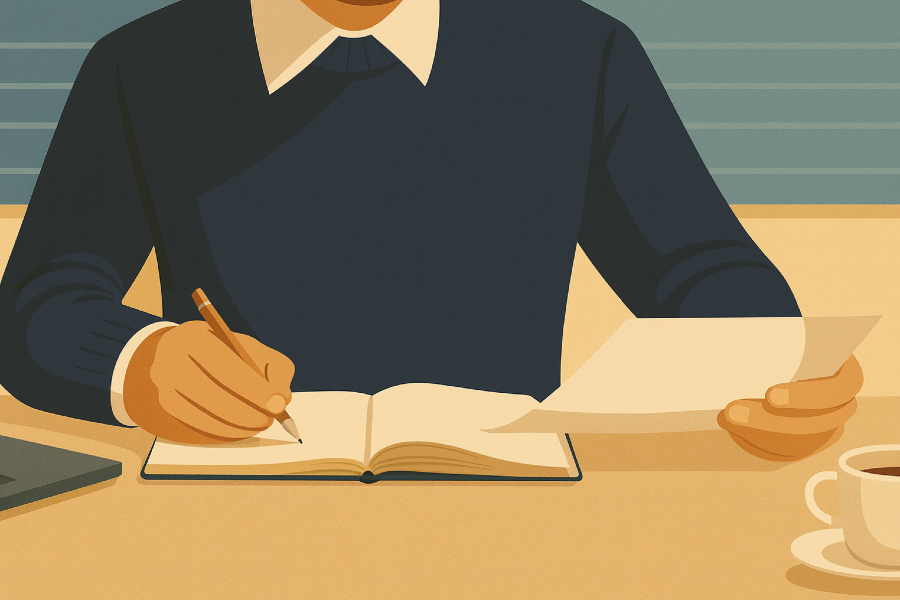
How a Personal Injury Lawyer Can Help Strengthen a Multi-Car Accident Claim
After a multi-vehicle accident, one of the best steps you can take is to consult with an experienced personal injury attorney – essentially, your own California car accident lawyer. Personal injury lawyers play a crucial role in handling complex multi-car accident claims, assisting with evidence gathering, negotiations with insurance companies, and maximizing your compensation.
Why? Because an attorney’s guidance can make a huge difference in proving your claim and making sure you get fair compensation. Most car accident attorneys work on a contingency fee basis, so you pay nothing unless you win your case. Here are several ways a lawyer can help in a multi-car accident case:
If you need legal advice after a multi-car accident, we offer a free consultation to review your case and discuss your options.
Thorough Investigation and Evidence Gathering
A seasoned lawyer will move quickly to investigate the crash. Our legal team works together to gather police reports, traffic camera footage, photos of the scene, skid mark measurements, vehicle damage analyses, and witness statements. In complex multi-car scenarios, lawyers often collaborate with professional accident reconstruction experts to piece together what happened.
They know what evidence is critical. For example, downloading crash data from vehicles or obtaining 911 call records. This comprehensive approach is aimed at clarifying fault when it’s not immediately obvious.
Identifying All Liable Parties
A car accident attorney will carefully review the facts to identify every party that might be at fault – not just the obvious one. Maybe the driver who hit you was primarily at fault, but perhaps another driver’s negligence contributed as well. Your lawyer will ensure that claims are filed against all responsible drivers or entities. This is important because in California you can recover from any party who bears fault. The goal is to not leave money on the table by overlooking someone’s negligence.
Navigating California’s Comparative Negligence Law
If there’s an allegation that you were partially at fault, a California car accident lawyer can help protect you from unfair blame. Insurance companies might try to argue you were partly responsible (for example, “you braked too suddenly” or “you weren’t paying attention”) to reduce what they owe you.
A skilled attorney will push back on unsupported claims and use evidence to show what really happened. And if you did have a small degree of fault, your lawyer will fight to keep that percentage as low as possible. Because California is a pure comparative negligence state, even if you share some blame, you can still recover damages – your lawyer’s job is to maximize that recovery by minimizing your perceived fault and to help you recover compensation for your injuries and losses.
Handling Multiple Insurance Companies
Dealing with one insurance company after an accident is hard enough; dealing with three or four is overwhelming. Once a lawyer is representing you, they can handle all communication with the insurers. This means you won’t have adjusters from different companies calling and pressuring you into giving statements or accepting quick low-ball settlements.
Your attorney will present the evidence to the insurers in a clear way to establish their insured’s liability. If insurance companies are pointing fingers at each other, let your car accident attorney cut through that noise. They know the tactics insurers use and won’t be intimidated. Essentially, the lawyer becomes your voice and shield in front of all the insurance adjusters involved.
Proving Liability and Building Your Case
As discussed, proving fault in a multi-car crash is the toughest part. Attorneys are adept at constructing a logical narrative of the accident from the jumble of facts. They will use the collected evidence to recreate the sequence of events and pinpoint who was careless. For example, a lawyer might demonstrate that Car A’s driver was speeding and set everything in motion, while Car B’s driver might have been able to stop had Car A not been negligent.
By building a strong case, your lawyer pressures the at-fault parties to accept responsibility, and if necessary, can file a personal injury lawsuit to pursue damages for your injuries and losses. RMD Law’s own car accident team emphasizes how figuring out who is at fault can be tricky, but they will collect evidence and create a solid case to identify who’s responsible. This is exactly the kind of work that needs to be done in multi-car claims.
Negotiating Fair Compensation
With multiple parties involved, settlement negotiations can get complicated. An experienced attorney knows how to negotiate in a multi-defendant situation. They can leverage evidence of clear fault to push for a fair settlement from the responsible parties (or their insurers). Their goal is to secure maximum compensation for you by skillfully evaluating your case and negotiating with all involved insurers.
They also calculate your damages properly – including medical bills, car repairs, lost wages, and pain and suffering – to make sure any settlement covers all your losses. Insurance companies might try to divide and conquer (each paying a smaller share), but your lawyer will fight to get you full compensation. If one insurance company knows another might share liability, sometimes they both try to pay less. A lawyer can coordinate a global settlement where all insurers chip in their fair portion.
Litigation and Legal Strategy
If the insurance companies won’t agree to a reasonable settlement, a personal injury lawyer can file a lawsuit on your behalf. In a multi-car accident lawsuit, your car accident attorney might sue several defendants at once. If your personal injury case arising from a multi-car accident goes to court, your lawyer will litigate against all responsible parties and pursue compensation for your damages. They will handle the complex court procedures, such as cross-claims between defendants (which often happen when defendants blame each other).
Having a lawyer means you have someone who understands how to handle these multi-party legal battles. Importantly, when you have an attorney ready to take the case to court, insurance companies are more likely to come to the table with a fair offer rather than gamble at trial. And if a trial is needed, your lawyer will present the evidence clearly to a jury to prove who was at fault for the accident.
Local Knowledge and Experience
Because RMD Law serves clients across California, our car accident attorneys are familiar with the common accident scenarios in each area. We know, for instance, that a chain-reaction crash on the 405 in Irvine might involve different factors than one on a rural highway outside Sacramento. This local experience helps in gathering the right evidence (like knowing if a certain freeway has traffic cameras, or if a particular intersection is a known danger spot).
We also stay up to date on California-specific traffic laws and regulations that could impact liability. In short, working with a California car accident attorney provides the specialized legal expertise and local insight that can strengthen your claim and help you navigate insurance claims and compensation issues effectively.
Support and Guidance Throughout the Process
Lastly, a California car accident lawyer provides peace of mind. Multi-car accidents can be traumatic. You might be dealing with injuries, without a vehicle, and getting calls from multiple adjusters – it’s a lot. When you have an attorney, they guide you on what to do (and what not to do, like avoiding giving any recorded statements without counsel). They handle the stressful interactions so you can focus on recovering from your injuries.
At RMD Law, for example, our team prides itself on supporting accident victims and other clients mentally, emotionally, and financially through the aftermath of accidents. You’re not alone in dealing with the mess – your lawyer is your advocate so you can get back on your feet.

Untangling the Wreck: Call RMD Law Today
Multi-car accidents in California present unique challenges when it comes to liability. There isn’t always a quick or obvious answer to “Who is liable?” Often, several people share responsibility. The investigation can be complex and the claims process can become an uphill battle of each party denying fault.
However, understanding the factors at play and California’s comparative negligence rules is a good first step. Most importantly, getting help from knowledgeable California car accident lawyers or car accident attorneys can make all the difference. These legal professionals have the expertise to handle multi-car accident claims, untangle the web of liability, protect your rights, and fight for the compensation you deserve after a multi-vehicle pile-up.
If you or a loved one has been injured in a multi-car accident – whether in San Diego, San Francisco, or anywhere in between – don’t hesitate to reach out for legal guidance. RMD Law has extensive experience handling complex car accident claims, and we’re ready to help you navigate the road ahead toward recovery and justice.
Stay safe out there, and remember that you have options even when an accident gets complicated. If you are considering legal action after a multi-car accident, contact us today for a free case evaluation.
- Worst Traffic Times in L.A. Based on Crash Data - December 1, 2025
- What is the Role of Expert Witnesses in Strengthening Personal Injury Cases? - November 20, 2025
- How Much Will My Insurance Increase After an Accident?: The Hidden Cost of Car Accidents in California - November 17, 2025

